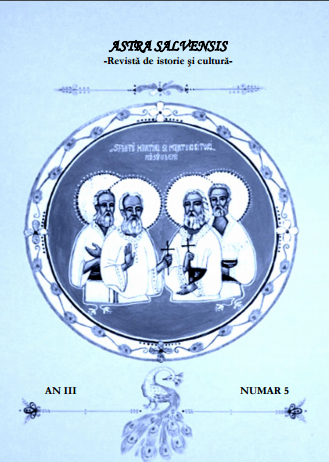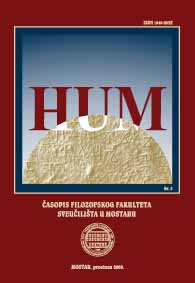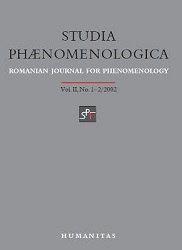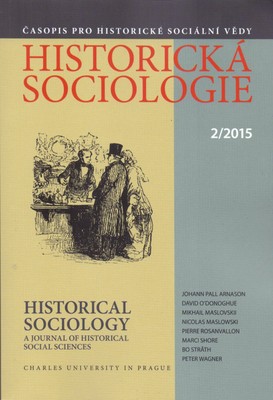
Ana Hancu, Drama Ardealului 1848-1849. Mărturii. Pierderi umane şi materiale în timpul Revoluţiei şi Războiului Civil în Transilvania centrală,
In this study, the author reviews the boook of Ana Hancu about the revolution from 1848.
More...We kindly inform you that, as long as the subject affiliation of our 300.000+ articles is in progress, you might get unsufficient or no results on your third level or second level search. In this case, please broaden your search criteria.

In this study, the author reviews the boook of Ana Hancu about the revolution from 1848.
More...
On 12 December, 1963, the Ambassador of the Romanian People's Republic in Beijing, Dumitru Gheorghiu, met with Peng Zhen, a member of the political Bureau of the Central Committee of the Chinese Communist Party. The significance of the discussion between the two is that it provides a complete picture of the Sino-Soviet split at the end of 1963, addressing issues such as: the commercial relations between the USSR and the PRC, the question of the Soviet experts, the border incidents occurred between the two sides and the Sino-Soviet public debate.
More...
In this review, the author presents the book of Ştefan Popa about the relation between the war and the religion.
More...
In this book, tje author presents the last enciclique of Pope Francois about the murcy.
More...
At the beginning of the twentieth century, in Transylvania a new generation asserts itself, considering that the Romanians 'rights can be defended only by party leaders' involvement in politics. The Transylvanian new generation started an intense political activity in Budapest, Vienna and Bucharest. Romanian politicians have begun negotiations with the Hungarian political class to achieve autonomy in Transylvania. The Romanian-Hungarian negotiations led by the leaders of P.N.R. in 1910-1914 proved that Transylvania has a political elite and these negotiations stand for an prelude to the great saga of national union. During the Romanian-Hungarian negotiations an important role went to Vasile Goldiş, who, after the work in the Hungarian Parliament concluded that the problem of nationalities was the most important political issue of Hungary, which could not be solved without the cooperation of all the politicians in Hungary.
More...
The year, 1989, was the most important historical moment after the Second World War because it represented the ,,liberation” from the yoke of the communist totalitarian regimes. It was a moment of special significance which was marked by the triumph of the West before the Soviet Union. In the present study we propose to analysethe meaning of 1989 for countries in Central and Eastern Europe that were under Moscow’s sphere of influence, starting from the consideration that the communist regimes could no longer maintain their rule. The domino effect was felt stronger, due to the fact that once communism fell in Poland, this could not be credited to other members who were in the soviet bloc.
More...
The sanitary system in Bukovina is in many respects connected to the reformatory efforts of the Josephinist period. The introduction of a new medical legislation, institutions, and sanitary rules had affected the whole society, these reforms gradually reduced the existing traditional patterns in health care, and eventually replaced them with regulated, structured measures of the medical knowledge and practice. Modeled after Central-European examples, they played a key role in the process of modernization of the “easternmost province of the Habsburg Monarchy”. This paper shows different aspects of the relationship between the medical initiatives – emanating from Vienna, and their implementation in Bukovina, in a variety of different circumstances, from the late eighteenth to the mid-nineteenth century. The cases of epidemics and sanitary/medical structure (such as quarantine, hospitals and their practitioners) are used to illustrate some of the main issues involved.
More...
In this article I have set out to analyze the four texts of ,,minor memoirs” which portray the last living years of Ioan Axente Sever, the leader of the 1st legion of Blaj during the Transylvanian revolution of 1848-1849. The four ,,minor memoirs” were identified in the Romanian media of Transylvania from the first half of the 20th century, more precisely in Gazeta de Transilvania, Transilvania, Arhiva Someşană and Ţara Bârsei. Their authors were all scholars, namely Virgil Şotropa, Constantin Lacea, Horia Petra Petrescu and Ioan Crişan.
More...
In this chronicle, the author describes the first edition of the camt "At our home",which tooked place at Sebeş.
More...
In this chronicle, the author describes the 25th anniversary of the reloaded Department from Năsăud of "Astra".
More...
In this review, the author presents the memories from the highschool of Valeriu Branişte, important personality of Transylvania.
More...



The article discusses political processes in post-Soviet Russia from the perspective of the multiple modernities theory. A study of Russia’s political transformation on the basis of this approach allows us to reconsider the obstacles to democratization that existed in the 1990s and the socio-cultural preconditions for de-democratization in the 2000s. The author draws on Johann Arnason’s analysis of the Soviet model of modernity. From this perspective the Soviet model possessed only some civilizational traits and did not lead to a sustainable civilizational pattern. Nevertheless, remnants of that model and the imperial legacy of the Soviet period influenced Russian politics of the last two decades. The dynamics of democratization and de-democratization in Russia represent a case of path dependency which is both post-communist and post-imperial.
More...
The Austro-German population of Ireland in 1936 was 529. Approximately 25% of the adult male cohort were, or became, members of Hitler’s Nazi Party (NSDAP). A small cadre of senior figures in the party were active in recruiting new members as Nazi Germany’s fortunes rose from 1933 to 1939. Some 32 Germans and Austrians resident in pre-war Ireland have been identified as Nazi Party members, although a small number of these were exchange students rather than full-time residents. This paper examines the six NSDAP members who held senior positions in the Irish public service. As Irish state employees they were in a contradictory position: swearing loyalty to Adolf Hitler’s Third Reich while attempting to hold down important jobs on the Irish state payroll. Dr. David O’Donoghue’s article scrutinises the activities of these six men, as well as explaining how they tried, by varying degrees, to serve two masters. The paper also examines their wartime and post-war lives.
More...